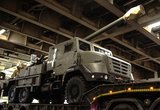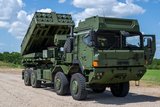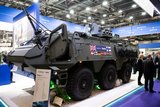Raytheon to build microwave antenna system to defeat airborne threats
Deliveries of the systems will be expected in FY2024 and FY2026. (Photo: Raytheon)
Raytheon, an RTX business, will design, build and test two high-power microwave (HPM) antenna systems that will use directed energy to defeat airborne threats at the speed of light. The systems will be designed to be rugged and transportable for front-line deployment.
Under the three-year, US$31.3 million contract from the Naval Surface Warfare Center Dahlgren Division, Raytheon will deliver prototype systems to the US Navy (USN) and US Air Force (USAF) as part of the DEFEND programme.
Colin Whelan, president of Raytheon Advanced Technology, said: ‘The new iterations of Raytheon’s high-power microwave systems are cost-effective and reliable solutions that operate at the speed of light – [providing better defence] against faster and more manoeuvrable threats.’
Work will be conducted in coordination with the USAF Research Lab, USN Naval Surface Warfare Center Dahlgren Division and the undersecretary of defense for research and engineering.
The new HPM prototype systems build on Raytheon's decades of experience developing capabilities such as the Counter-Electronic High Power Microwave Extended Range Air Base Defense, known as CHIMERA.
Prototypes will be expected to be delivered in FY2024 and FY2026.
More from Land Warfare
-
![Croatia orders Leopards and CAESAR howitzers as Lithuania orders more CAESARs]()
Croatia orders Leopards and CAESAR howitzers as Lithuania orders more CAESARs
The Leopard is becoming the tank of choice in central and eastern Europe as Croatia joins Lithuania, the Czech Republic and Hungary in ordering the platform. Lithuania and Croatia have also signed for CAESAR howitzers.
-
![Light Reconnaissance Strike – enabling a vital mission set (Studio)]()
Light Reconnaissance Strike – enabling a vital mission set (Studio)
A new system-of-systems concept will unlock digital integration of sensors and weapons for Light Forces, allowing them to shape the battlefield environment on their own terms and upgrade legacy platforms.
-
![Lockheed Martin to look further afield for GMARS rocket system opportunities]()
Lockheed Martin to look further afield for GMARS rocket system opportunities
The HX truck is already in use in many NATO and allied countries around the world as a logistics vehicle and carrier for high-value systems, including missile firing weapons, so its use for the Global Mobile Artillery Rocket System makes logistical sense.
-
Medium knocked out of British Army LMP, with CAVS as heavyweight champion
As the British Army seeks to modernise and consolidate its diverse vehicle fleet, yet another change in direction is underway.

























